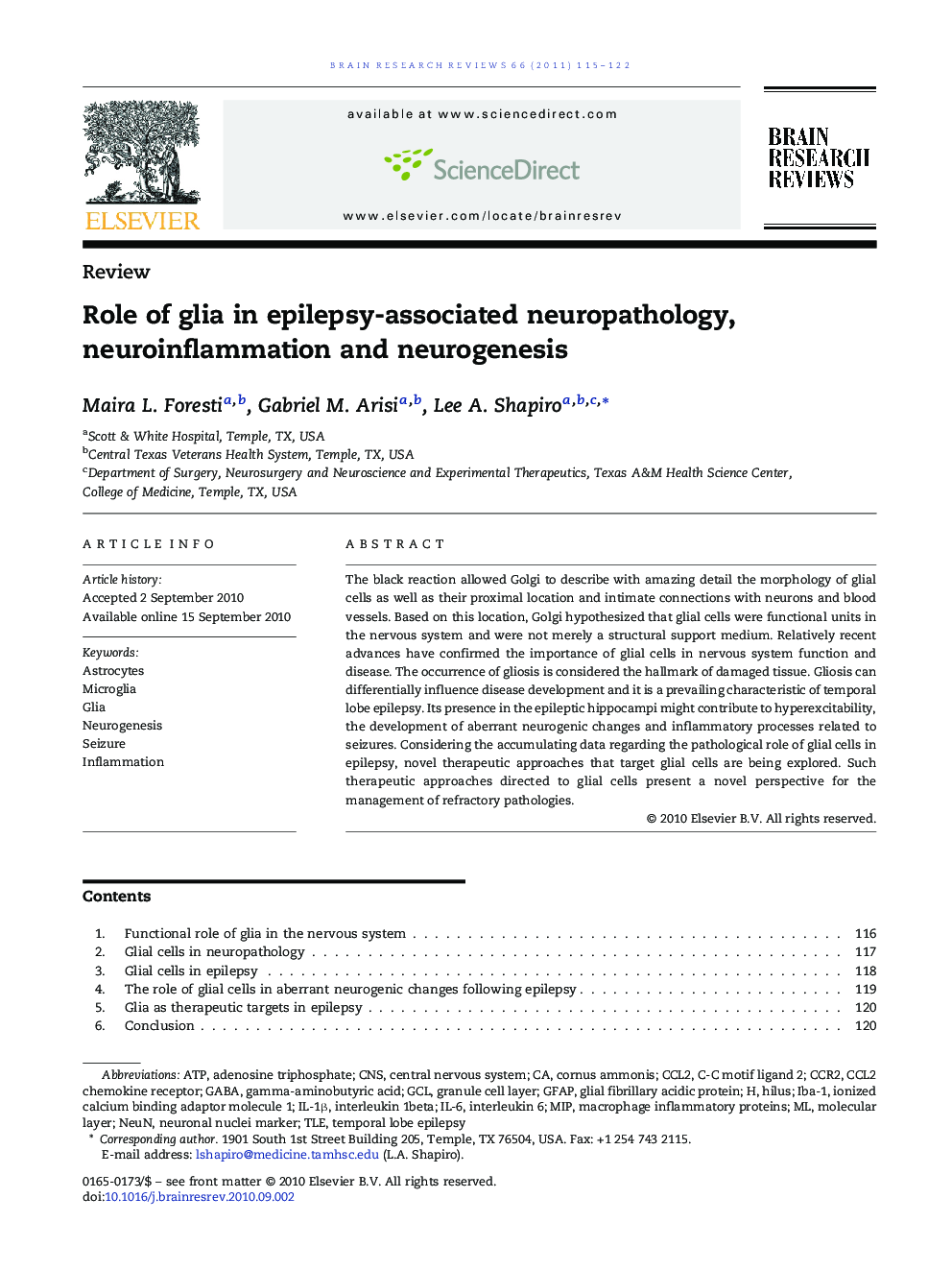| Article ID | Journal | Published Year | Pages | File Type |
|---|---|---|---|---|
| 4333624 | Brain Research Reviews | 2011 | 8 Pages |
The black reaction allowed Golgi to describe with amazing detail the morphology of glial cells as well as their proximal location and intimate connections with neurons and blood vessels. Based on this location, Golgi hypothesized that glial cells were functional units in the nervous system and were not merely a structural support medium. Relatively recent advances have confirmed the importance of glial cells in nervous system function and disease. The occurrence of gliosis is considered the hallmark of damaged tissue. Gliosis can differentially influence disease development and it is a prevailing characteristic of temporal lobe epilepsy. Its presence in the epileptic hippocampi might contribute to hyperexcitability, the development of aberrant neurogenic changes and inflammatory processes related to seizures. Considering the accumulating data regarding the pathological role of glial cells in epilepsy, novel therapeutic approaches that target glial cells are being explored. Such therapeutic approaches directed to glial cells present a novel perspective for the management of refractory pathologies.
Research Highlights►Golgi described glia morphology and suggested a functional role for glia in the CNS. ►Recent discoveries show a pivotal role of glia in neurophysiology and neuropathology. ►Gliosis is being considered as an important novel therapeutic target in epilepsy.
